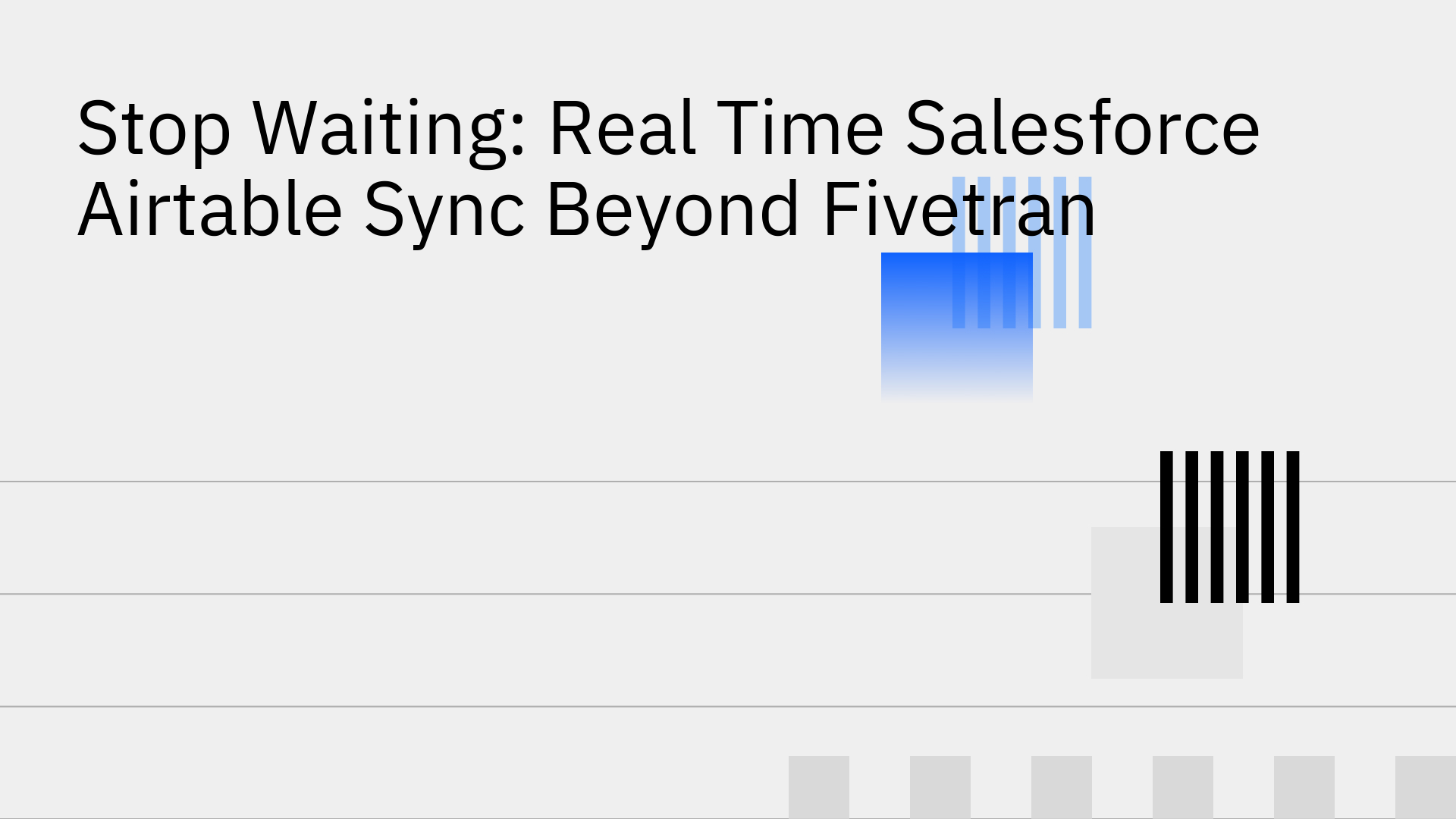
In modern enterprise architectures, maintaining data consistency between core operational systems like Salesforce and flexible work management platforms like Airtable is a non-negotiable requirement. Many organizations default to traditional ETL (Extract, Transform, Load) pipelines, often leveraging tools like Fivetran, but quickly discover their architectural limitations.
These systems are designed for batch processing, introducing latency that is unacceptable for real-time operational workflows.
True operational agility demands real-time data integration, a methodology where data is propagated between systems with sub-second latency, enabling event-driven processes and a unified data state [7].
Traditional ETL tools operate on a scheduled, batch-processing model. They poll source systems at fixed intervals (e.g., every 5, 15, or 60 minutes), extract changes since the last run, and load them into a target destination.
While a robust ETL/ELT platform like Fivetran is highly effective for populating data warehouses for analytics, its architecture is fundamentally misaligned with the requirements of real-time operational sync between two transactional systems.
The consequences of this architectural mismatch and inherent data latency are severe:
These operational bottlenecks are a direct result of one-way or delayed data flows. To eliminate them, a fundamentally different approach is required—one that supports true Airtable Bi-Directional Sync: Achieve Real-Time Data Consistency.
Real-time, bi-directional synchronization is an advanced integration pattern where changes in one system are detected and propagated to the other near-instantaneously, with robust conflict resolution to maintain data integrity.
Unlike batch ETL, real-time platforms often leverage Change Data Capture (CDC) or event-driven webhook architectures to achieve latency under 100 milliseconds [6].
This paradigm shift delivers critical technical and business benefits:
As enterprises increasingly rely on a distributed ecosystem of best-of-breed SaaS tools, the demand for sophisticated integration is exploding, making the adoption of the 2025 best two-way sync tools a technical imperative.
Airtable provides a native capability to integrate with Salesforce, allowing users to import data from Salesforce reports into a base [2]. While convenient for simple data pulls, this method has profound technical limitations for operational use cases:
These constraints make it clear why a more capable solution is needed to make Airtable real-time bi-directional sync easy and avoid the data integrity issues inherent in one-way, high-latency syncs.
Workflow automation platforms like Zapier are excellent for connecting apps with simple, trigger-based logic ("Zaps") [5]. For example, "when a new record is created in Airtable, create a lead in Salesforce." However, these tools are not architected for high-volume, bi-directional database synchronization. Attempting to use them for maintaining state across two systems leads to complex, brittle "spaghetti integrations" that are difficult to manage, prone to hitting API rate limits, and become cost-prohibitive at scale due to task-based pricing models.
Stacksync emerges as the modern architectural solution, purpose-built for real-time, bi-directional data synchronization. It moves beyond the batch-processing limitations of ETL tools to provide a true, continuous sync designed for operational workloads.
By using Stacksync, you can sync Airtable and Salesforce in real time with two-way sync, effectively eliminating data latency and empowering your teams to operate with unparalleled agility.
A real-time, bi-directional sync between Salesforce and Airtable unlocks a new class of powerful, automated workflows that are simply not possible with delayed or one-way integrations.
The demand for such streamlined processes is evident, with organizations constantly seeking new ways to connect their core applications [1]. While some solutions offer basic connections [3], true operational efficiency requires a more robust platform [4] that supports a wide range of real-time use cases [8].
For operational excellence, businesses can no longer afford the data latency inherent in using traditional ETL tools like Fivetran for syncing live, transactional applications.
While ETL remains the right choice for populating analytical data warehouses, a dedicated real-time sync solution is the mandatory choice for modern operational workflows.
Stacksync provides the purpose-built platform to eliminate data silos and empower your teams with instantaneous data consistency across your application stack. It acts as the essential data-unifying layer, ensuring platforms like Salesforce and Airtable work in perfect harmony.
When evaluating your stack, understanding the nuances between platforms is key, which is why a detailed Airtable vs. Attio vs. Salesforce Comparison can reveal where true synchronization adds the most value. It's time to graduate from slow, batch-based integrations and embrace the power of true real-time synchronization.